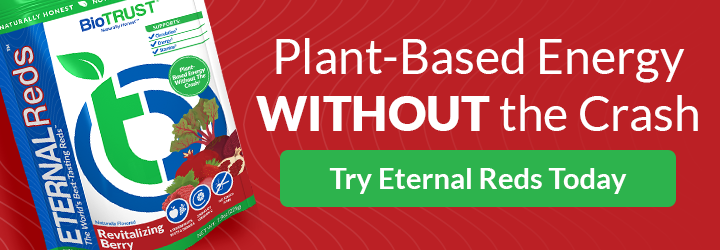What Is the Mind Diet: A Beginner’s Guide

What happens when you take two proven, highly effective diets (i.e., Mediterranean and DASH) and smash them together with a focus on brain health? Theoretically, at least, you’d have another highly effective diet that not only improves overall health markers but lowers the risk of mental decline. And that’s exactly what initial research on the MIND diet has found.
Of course, there’s no completely foolproof way to avoid all health conditions, including cognitive decline. But if you’re looking for ways to decrease your risk of Alzheimer’s disease or cognitive decline, then regularly filling your plate with leafy greens, berries, nuts, and beans may be one of the best things you can do.
In today’s article about the mind diet, we will cover:
- The Origins of the Mind Diet
- MIND Diet Food List
- MIND Diet vs Dash vs Mediterranean
- Benefits of MIND Diet
- Drawbacks of MIND Diet
- MIND Diet Recap
The Origins of the MIND Diet
An estimated 5.8 million Americans are currently living with Alzheimer’s. That’s about 1 in 10 Americans who are over 65 years old. Especially for those individuals at a higher risk for dementia, finding a way to eat to lower the risk is important. In 2015, researchers started to study the relationship between individual foods and their effects on brain health as we age.
The Mediterranean-Dash Intervention for Neurodegenerative Delay or MIND diet was created by the late Martha Clare Morris, who was the epidemiologist at Rush University Medical Center. Her study was published by the National Institute on Aging in 2015. And the results were impressive. Those following the diet moderately well experienced a 35% decreased risk for Alzheimer’s. And those who could follow it religiously had up to a 53% decreased risk! 1
Other research indicates that the MIND diet may help prevent or delay Parkinson’s disease. For example, research from 2021 found that following the MIND diet was connected with delaying Parkinson’s onset by up to 17 years for women and 8 years for men. 2
The diet was also better than either DASH or Mediterranean—again, two quality diets—for preventing cognitive decline. Another study (from 2020) found that the MIND may even help reverse the damaging effects of obesity on brain structure as well as thinking ability.
Mind Diet Foods List
Like the two previously mentioned diets, on the MIND diet, you eat a lot of vegetables and whole grains. You’ll also snack on berries, preferably blueberries followed by strawberries, and nuts. You’ll also get quality protein—in the form of least a half a cup of beans every other day along with poultry at least two times per week and fish once a week.
There are ten groups of brain-fueling foods on the MIND diet food list, which have all been shown to help slow cognitive decline in research, included in the diet, such as:
- Any leafy green vegetable (at least one every day), such as kale, collard greens, spinach, cabbage, watercress, romaine lettuce, and microgreens. Shoot to consume at least six servings every week.
- All other vegetables—aim to get at least one other vegetable into your daily diet, preferably a non-starchy vegetable as they’re nutrient-dense but lower in calories.
- Nuts, dry-roasted or raw and unsalted, without any extra sweeteners or oils, to be eaten at least five times a week.
- Berries, especially blueberries and strawberries, at least two times each week.
- Beans and lentils to be eaten with at least four meal a week.
- Whole grains, such as oatmeal, brown rice, quinoa, and 100% whole-wheat bread or pasta, aiming to eat at least three serving each day.
- Fish, especially omega-3-fat-rich fish like salmon, sardines, mackerel, and tuna, for one serving per week.
- Poultry, such as chicken or turkey, eaten at least two times each week. Avoid any fried options, though, and enjoy baked or grilled poultry instead.
- Olive oil is the primary cooking oil.
- Wine, either red or white, but no more than one glass per day.
SPECIAL OFFER: Ageless Turmeric Supports Healthy Inflammation Levels & Detoxification. Now Up to 71% Off.
According to the U.S. News and World Reports Best Diets Overall, recipes the MIND diet include:
- Veggie-rich chicken fajitas or fish tacos
- Avocado toast on whole-grain bread—you can top it with salmon, an over-easy egg, or sliced tomatoes
- Whole-wheat spaghetti with ground chicken or turkey meatballs
- Berry smoothies, especially those made with blueberries, plant-based milk, Greek yogurt, and a handful of spinach
- Hummus with fresh vegetables
- A small handful of nuts like almonds or walnuts or chopped nuts on Greek yogurt mixed with berries
- Veggie and bean-loaded chili
- Vegetable-rich frittatas
Because of the wide variety of tasty and easy-to-prepare foods, the MIND diet is also considered one of the easiest diets to follow, ranking in at #4 in the U.S. News’ Best Diets. The diet provides fairly loose guidelines rather than rigid rules, which makes it easier to follow. It’s also fairly easy to eat out on the diet.
Like any diet, though, following it is easier with adequate meal planning and preparation as most meals will be made and consumed at home. If you don’t follow the diet exactly, you’ll still likely enjoy benefits. But the more closely it is followed, the better the results appear to be.
You may also need to adjust your tastebuds to new foods. For example, if you often cook with butter, you’ll need to adjust to the flavor of olive oil as no more than one tablespoon of butter is recommended per day. If you often eat fried foods, you’ll need to adjust to foods that are baked or grilled.
There are some foods to limit, but you don’t necessarily need to remove them completely from your diet. For example, meat and meat products (e.g., bacon or sausage) are recommended to less than four serving per week. Enjoy sweets fewer than five times per week. Less than a single serving per week is recommended when it comes to cheese, fried food, or fast food.
The MIND diet also allows for a wide variety of preferences. For example, people can adapt the diet to fit into vegetarian or vegan, gluten-free, low-salt, Kosher, or Halal guidelines.
How Does the MIND Diet Differ from DASH or Mediterranean?
While all three diets are based on healthy whole foods, including quality meats, fish, whole grains, fresh vegetables, and olive oil, the MIND diet recommends limiting the types and amounts of fruits and vegetables to eat. For example, berries are highly recommended, but other fruits are limited. Dairy products, potatoes, and even fish are limited to just one meal per week, rather than freely consumed.
While the Mediterranean and DASH diets don’t differentiate between fruits and vegetables—recommending a variety of all—the MIND diet encourages eating more green, leafy vegetables plus at least one other type of non-starchy vegetable every day.
The focus on foods for the MIND diet are those that are exceptionally high in antioxidants, including flavonoids, to help fight the damaging effects of oxidative stress (i.e., excess free radicals throughout the body). The brain can be especially vulnerable to oxidative stress and the inflammation that tends to come with it. So, the MIND diet is highly focused on foods that are high in antioxidants, including berries, greens, nuts, and olive oil. 3
Benefits of MIND Diet
Because the MIND diet focuses on healthy whole foods with lots of fiber-rich vegetables, including leafy greens, and whole grains—while limiting high-calorie pastries, sweets, fried foods, and dairy—it may help folks drop pounds as they protect their brains. This, however, isn’t the goal of the diet.
Neither counting nor cutting calories is required—so, you can eat until you’re full. That said, if weight loss is one of your goals, you will need to ensure you are eating less calories than you’re burning. That may mean eating less or exercising regularly and being more active. Eating more whole-foods that are rich in fiber and plenty of protein are simple ways to help feel fuller even while eating less calories.
Exercise isn’t necessarily a part of the MIND diet. However, we do know that staying physically active is another beneficial way to protect the brain. Aim for at least two and a half hours of moderate intensity exercise each week. This can include walking, hiking, dance, boxing, jogging, bicycling, or the like. Plus, add a couple of days each week of muscle-strengthening workouts, such as weight lifting, bodyweight workouts, or Power yoga.
Another benefit of the MIND diet is that it’s heart healthy and has been shown to help reduce the risk of high blood pressure, heart attack, and stroke. Of course, the DASH diet is specifically designed for this reason and has also been shown to have positive effects on cholesterol. The Mediterranean diet has also been linked to these types of benefits.
For people who have already suffered from a stroke, the MIND diet offers significant benefits. Stroke survivors have nearly twice the rate of dementia, with almost 20% of stroke survivors developing dementia. When studying the MIND diet, researchers found that those who most closely adhered to the diet had brains that were 7 1/2 years younger than those who didn’t. 4
Other research studied Octogenarians who had previously suffered from a stroke. Results found that those who were most adherent to the MIND diet had a 20-year difference in terms of cognitive functioning compared to those who were least adherent. 5
Finally, the MIND diet may be beneficial for helping prevent or control diabetes. While it hasn’t been directly shown to help, the eating patterns recommended by the DASH, Mediterranean, and MIND diets align well with those recommended for people who suffer from diabetes. Plus, research has found that folks who follow a Mediterranean diet are at a lower risk for Type 2 diabetes by as much as 12%. Consuming both nuts and olive oil regularly have been shown to help prevent diabetes, and the MIND diet provides both.
Drawbacks of the MIND Diet
Just like the DASH and Mediterranean diets, the MIND diet doesn’t appear to have many drawbacks, including any increased health risks. However, you will want to ensure it fits into your dietary preferences, and work with your own health-care practitioner if you currently have any health concerns.
Also, because this diet does limit dairy products, it’s a good idea to ensure you meet calcium and potassium needs with a variety of other foods.
While there are some resources available—including a few recipe blogs and cookbooks—there aren’t nearly as many as for the more popular DASH or Mediterranean diets, so be prepared to do some searching for good recipes and other helpful tips.
MIND Diet Recap
The MIND Diet looks to be a highly promising option if you’re concerned about cognitive decline or are at greater risk for dementia. We’re still learning more about the long-term effects of the diet. In fact, there’s a current long-term study (over three years) underway testing the effects of the diet on over 600 people who are over 65 years old. 6
Because of the diet’s focus on healthy, whole foods, including plenty of vegetables, quality proteins, and healthier fats, it checks all the boxes for a nutritious diet plan.
And, especially when combined with other healthy habits, such as consistent, regular exercise and getting enough quality sleep, the MIND diet will likely help decrease cognitive decline, including Alzheimer’s disease and other forms of dementia. Exercise, notably, has been found to decrease the risk of Alzheimer’s and reduce cognitive decline, 7 so it only makes sense to combine it with a brain-boosting diet like the MIND diet.





 7 Signs Your Body is Seriously Low on Collagen (not just wrinkles)
7 Signs Your Body is Seriously Low on Collagen (not just wrinkles) Health Expert: "Turmeric Doesn't Work (unless...)"
Health Expert: "Turmeric Doesn't Work (unless...)" 3 Warning Signs Your Probiotic Supplement is a Total Waste
3 Warning Signs Your Probiotic Supplement is a Total Waste

